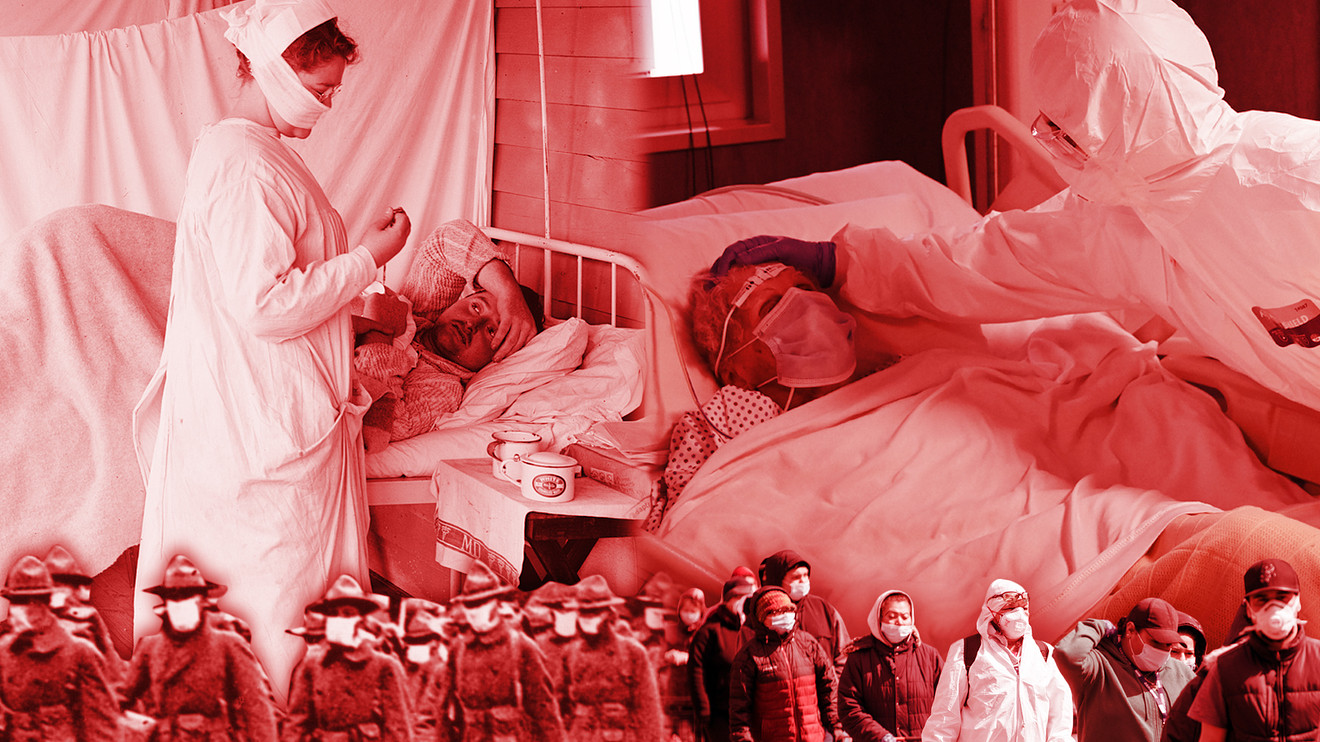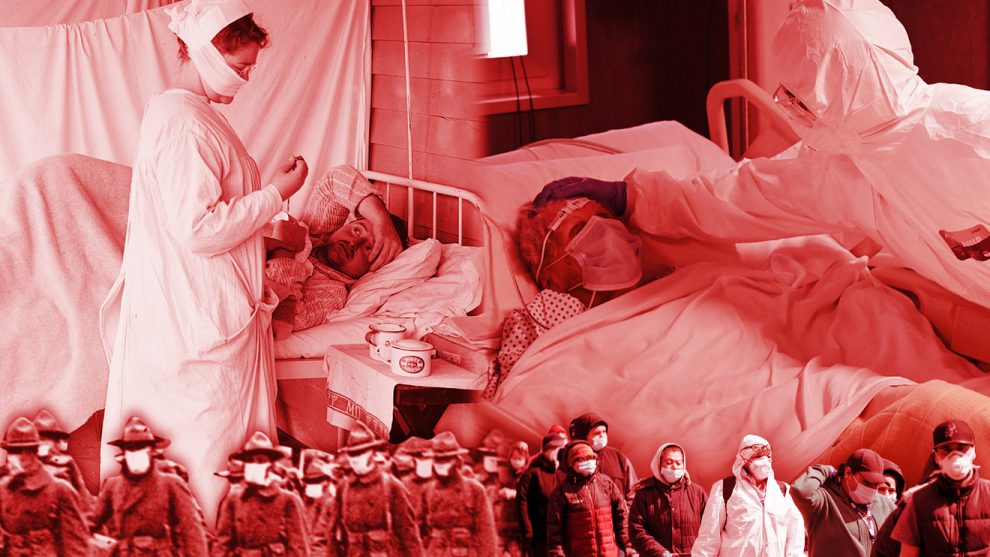
Should we be ready for a second wave?
Anthony Fauci, director of the National Institute of Allergy and Infectious Diseases for three decades and one of the leading experts on the pandemic in the U.S., said on Tuesday, “In a period of four months, it has devastated the whole world. And it isn’t over yet.” He added, Where is it going to end? We’re still at the beginning of it.” Yet said last week, he said, “We don’t inevitably have to have a second wave.” Fauci has previously said that a vaccine could take 12 to 18 months and that would be a game changer. Some observers say even that timeline is wildly optimistic.
“ ‘We can only look at what other seasonal coronaviruses and influenzas do. Based on that, most of us feel comfortable that there will be a second wave.’ ”
Many epidemiologists, however, advise more caution when talking about the reduced prospect of a second wave. Gregory Poland, who studies the immunogenetics of vaccine response in adults and children at the Mayo Clinic in Rochester, Minn., and who is an expert with the Infectious Diseases Society of America, told MarketWatch, “Nobody has a crystal ball. We’d all like to know definitively. We can only look at what other seasonal coronaviruses and influenzas do. Based on that, most of us feel comfortable that there will be a second wave.”
During the great influenza pandemic of 1918, the second wave was worse than the first, partly due to a more virulent strain of the virus. Another complication: Flu and SARS-CoV-2 have almost identical symptoms: fever, coughing, night sweats, aching, tiredness, and nausea and diarrhea in severe cases. Like all viruses, neither are treatable with antibiotics. They can both be spread through respiratory droplets via coughing and sneezing, yet hail from different virus families. There is still no universal flu vaccine, even though scientists have been researching the flu since the 1940s.
Poland likens our desire to get back to normal life to the fable of the tortoise and the hair. “The race doesn’t always belong to the swiftest. The public and political pressure is for a vaccine as soon as possible. Public pressure is not data. Moderna hasn’t produced data from their Phase 1 vaccine trial. We’re going to have to be very careful here. We have individual countries, individual mayors, governors, senators, the House and the president all inferring their own recommendations. What the public hears is just static.”
Approximately 10% to 20% at the very most of the U.S. population will be immune to the new coronavirus next time around, Poland said. “That means 70% to 80% of us are immunologically naive. People think because we hit Memorial Day and we have nice weather that it’s over. It ain’t over. When coroanvirus hit earlier this year, 99% of the seasonal influenza was over. This won’t happen next time, and they have similar symptoms. We still don’t have testing solved. Health-care providers are exhausted. They still don’t have enough personal protective equipment.”
“ ‘In a period of four months, it has devastated the whole world. And it isn’t over yet … Where is it going to end? We’re still at the beginning of it.’ ”
Similar to Poland, Mike Ryan, executive director of the World Health Organization’s Health Emergencies Program and former epidemiologist specializing in infectious disease and public health, in May warned of complacency surrounding relaxation of social distancing measures. Countries should “continue to put in place the public-health and social measures, the surveillance measures, the testing measures and a comprehensive strategy to ensure that we continue on a downwards trajectory, and we don’t have an immediate second peak,” he said.
Flattening the curve of new cases through social distancing, testing and contact tracing will help to avoid overwhelming the health-care system during any possible second wave, health professionals say. The U.S. has about 2.8 hospital beds per 1,000 people, according to industry website STAT News, which reports on public health and science issues. “With a population of 330 million, this is about 1 million hospital beds. At any given time, about 68% of them are occupied. That leaves about 300,000 beds available nationwide,” the publication said.
Letter from New York:‘When I hear an ambulance, I wonder if there’s a coronavirus patient inside. Are there more 911 calls, or do I notice every distant siren?’
Robert Redfield, director of the Centers for Disease Control and Prevention, recently told the Financial Times that he “can’t guarantee” that there won’t be more stay-at-home requirements in the winter or the fall. “We are committed to using the time that we have now to get this nation as over-prepared as possible. We’ve seen evidence that the concerns it would move to the southern hemisphere like flu [are coming true],” Redfield told the U.K. paper, adding, “When the southern hemisphere is over I suspect it will re-ground itself in the north.”
How are we going to prepare for a possible second wave? “Human behavior is controlling the pandemic’s parameters,” Poland added. “In a lot of the southern hemisphere, there is not the same public-health infrastructure, medical infrastructure and not the same access to PPE. There are also a host of other cultural factors that are different. Can you travel from the southern hemisphere to the northern hemisphere this summer? Of course you can. That will spark a second wave.” That, he adds, doesn’t account for further transmission during the recent riots across the U.S.
“ ‘Can you travel from the southern hemisphere to the northern hemisphere this summer? Of course you can. That will spark a second wave.’ ”
Mutation is another unknown. “This is an RNA virus and inherently a virus that will mutate and undergo recombination. When people are co-infected with two or more strains, the virus has the opportunity to trade genetic material. Patients in neighboring hospital beds might have subtly different coronaviruses. Now you provide the petri dish for them to combine. We hear things like “operation warp speed.” Never before have I seen politics, public opinion/public pressure and economics weigh so heavily on the science to subvert and pervert it.”
For his part, Fauci credited an improvement in testing and contact tracing for his change of position on the prospects of a second wave of the new coronavirus or SARS-CoV-2. “It’s the way we and the efficiency and effectiveness in which we put the manpower, the systems, the tests, to identify isolate and contact trace that will determine how successful we are in preventing that wave,” Fauci told CNBC’s “Halftime Report.” The U.S. health-care system will also have an opportunity to stock up on ventilators and PPE and, in an ideal world, people will understand the benefits of social distancing.
That same strategy of testing and tracing people who have tested positive so they can be quarantined appears to have worked in other countries, most notably Iceland. After worrying exponential growth in the early days of the pandemic, Iceland’s government has flattened the curve of new cases. Only six new cases of COVID-19, the disease caused by the novel coronavirus, were detected in May. There have been only three new cases so far this month, bringing the total number of confirmed cases to 1,807 and the total number of deaths from COVID-19 to 10.
In a few short months, scientists around the world have learned a lot about SARS-CoV-2, including the virus’s genetic structure; how it infects human cells; what kind of disease manifestation it causes; and how it impacts the liver, kidney and brain, and how secondary symptoms affect children. That progress has been reflected in the Dow Jones Industrial Index DJIA, -1.08% and S&P 500 SPX, -0.78%, which recovered the ground lost earlier in the pandemic. Equity indexes have ricocheted in recent months as markets remained hopeful of progress on research into a vaccine.
Poland cautions against read into public debate or the markets as an indicator of what the virus will do next. “The coronavirus only knows one thing,” he says, “and that is to infect another host.”











Add Comment